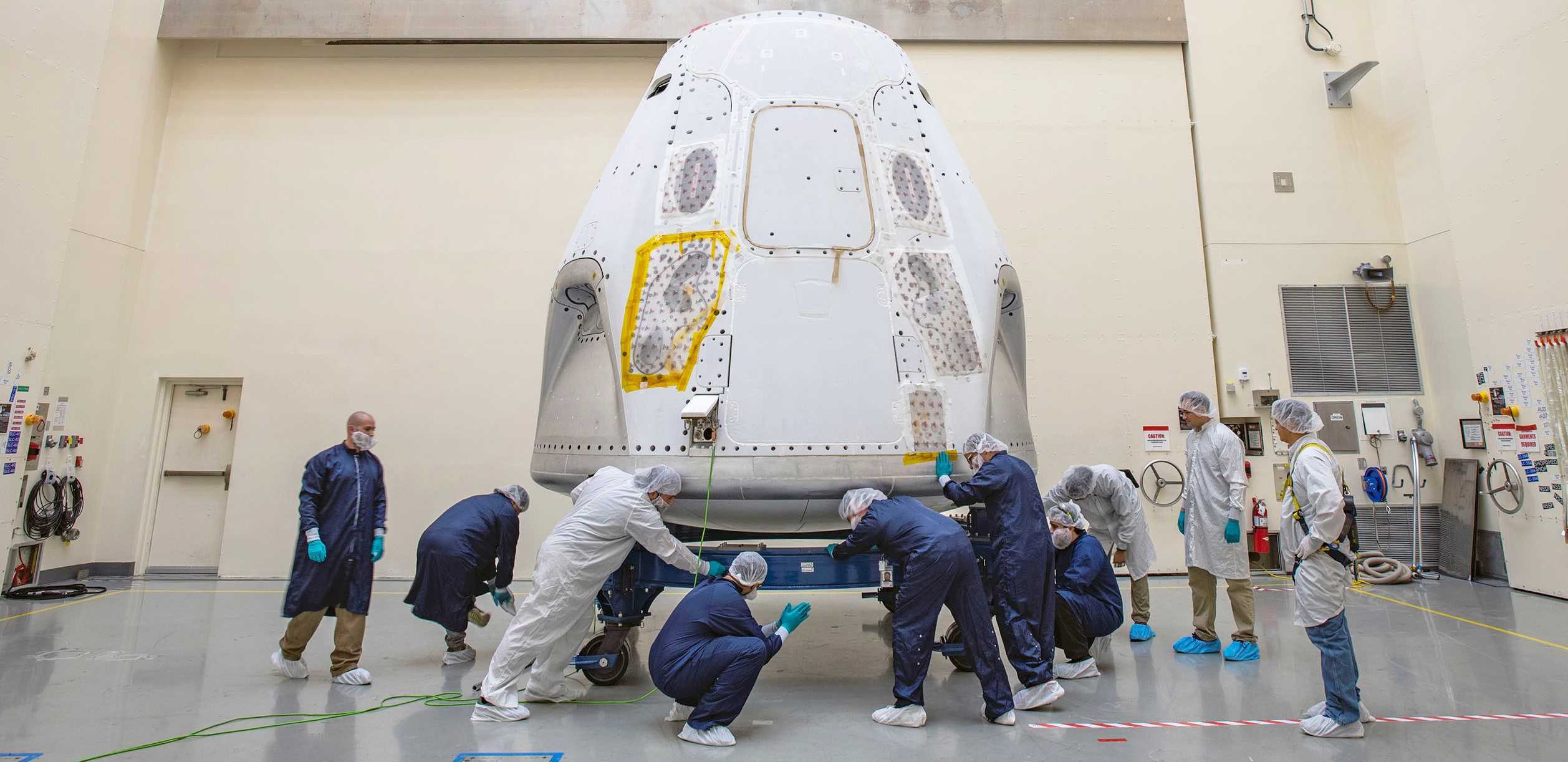
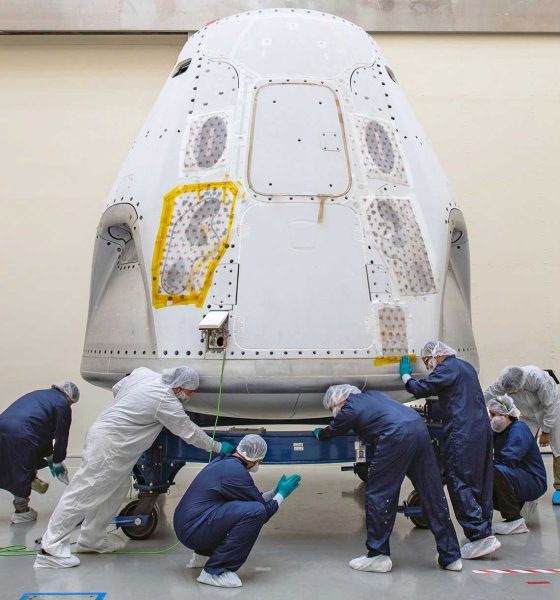
News
NASA confirms SpaceX will become the first private company to send astronauts to the space station
NASA has unambiguously confirmed that SpaceX – with its Crew Dragon spacecraft – will soon become the first private company in history to launch astronauts to the International Space Station (ISS), both an unexpected twist from the usually tight-lipped space agency and a major upset for Boeing.
Shortly after revealing that the first astronaut-rated Crew Dragon capsule had been completed and shipped eastward, SpaceX and NASA confirmed that the historic spacecraft arrived at SpaceX’s Florida processing facilities on Thursday, February 13th. With that milestone out of the way, it’s now believed that all the hardware needed for SpaceX’s ‘Demo-2’ astronaut launch debut – Falcon 9 booster B1058, a Falcon 9 upper stage, Crew Dragon capsule C206, and a Crew Dragon trunk – is finished, acceptance-tested, and preparing for flight in Cape Canaveral, Florida.
Extremely out of character for NASA given that Crew Dragon Demo-2 is expected to launch no earlier than two or three months from now, the space agency’s public statement that SpaceX will launch astronauts first simultaneously implies bad news for Boeing and its Starliner spacecraft. Contracted under the Commercial Crew Program in 2014, Boeing – awarded $5.1B – and SpaceX – awarded $3.1B – have been working to build two separate crew launch vehicles (Starliner and Crew Dragon) with the intention of ferrying NASA astronauts to and from the International Space Station (ISS). While both providers have had their own challenges, Boeing has been beset by numerous software failures born out during Starliner’s December 2019 orbital launch debut.
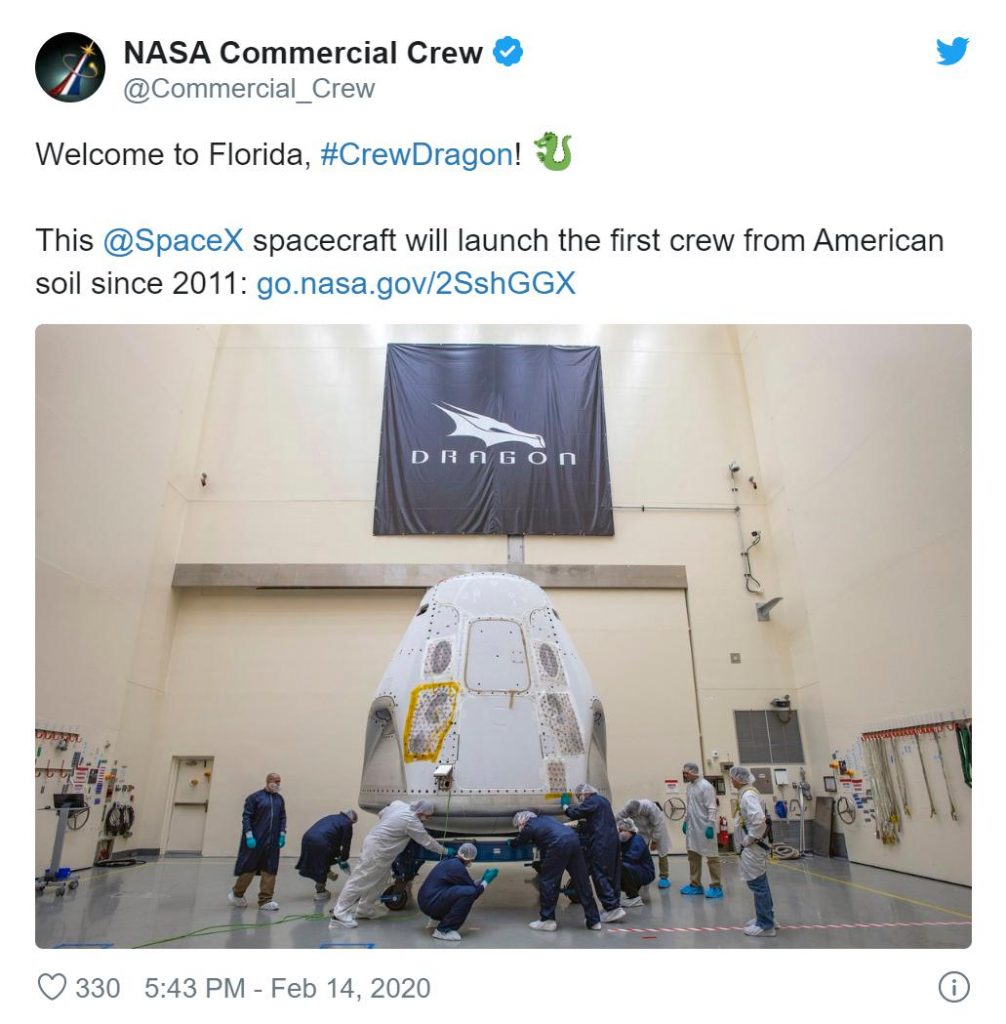
The Commercial Crew account has since deleted its tweet and NASA’s accompanying blog post – linked in said tweet – was tweaked to reflect a slightly different interpretation, but the original text unequivocally stated that “the SpaceX Crew Dragon spacecraft [assigned to] the first crew launch from American soil since 2011 has arrived at the launch site.” Given that both the tweet and blog post contained that exact same phrase, the fact that NASA retroactively censored and corrected itself strongly suggests that SpaceX will, in fact, become the first private company in history to launch astronauts into orbit.
NASA has a fairly notorious and years-long history of going well out of its way to avoid saying or implying anything that could be perceived as even slightly critical of Boeing. A prime contractor dating back to the first stage of the Saturn V rocket, Boeing has effectively secured billions of dollars of NASA’s annual budget and possesses deep political sway thanks in large part to the revolving doors between industry and government and the hundreds of millions of dollars it has spent on lobbying over the last two decades.
More recently, Boeing’s Starliner spacecraft suffered several major software-related failures during its December 2019 Orbital Flight Test, narrowly avoiding a second “catastrophic” failure mode solely because a separate software failure 48 hours prior forced the company to reexamine its code. In simple terms, both software failures probably should and could have been caught and fixed before launch if even a semblance of routine digital simulations and integrated vehicle testing had been performed by Boeing.
Unsurprisingly, NASA – at least after the fact – is now extremely concerned by the lack of such a basic and commonsense level of quality control in Boeing’s Starliner software pipeline. Even NASA, arguably, could and should have been attentive enough to catch some of Boeing’s shortcomings before Starliner’s launch debut. Adding to the embarrassment, NASA performed a “pretty invasive” $5M review of SpaceX’s safety practices and general engineering culture last year, triggered (not a joke) after CEO Elon Musk was seen very briefly smoking on a recorded interview. As part of regulations for the Commercial Crew Program, NASA was obligated to perform a similar review of Boeing’s safety culture, but the contractor demanded that NASA pay five times more – $25M – for the same thing.
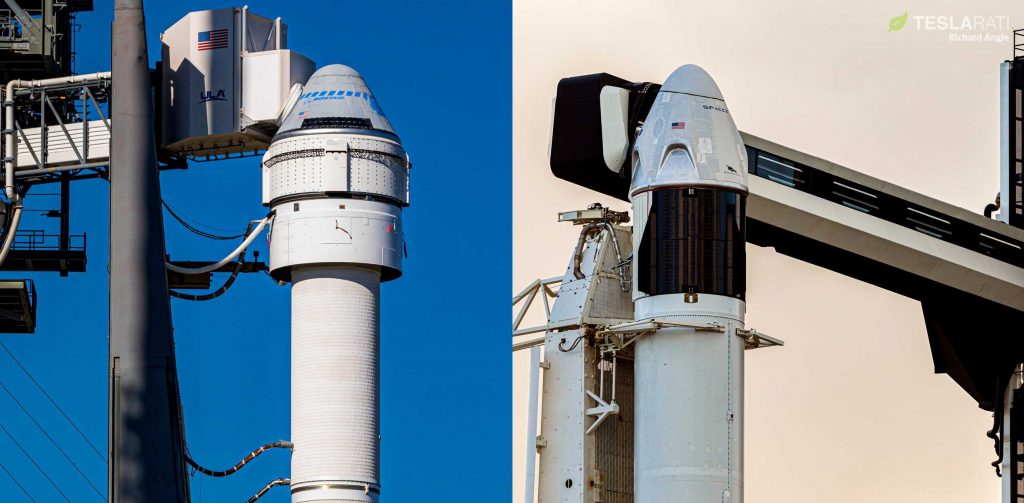
NASA unsurprisingly balked at Boeing’s demands and wound up performing a more or less symbolic “paper” review that typically involves ‘auditing’ paperwork supplied by the company itself. Despite the fact that Boeing would soon find itself mired in two fatal 737 Max crashes, killing 346 people as a result of shoddy software, an unreliable design, and bad internal communication, NASA still never pursued a similar safety review with Boeing. Now, only after a nearly-catastrophic in-space failure, NASA has finally decided that that safety review is necessary, while both NASA and Boeing will also have to extensively review all Starliner software and fix the flawed practices used to create and qualify it.
Perhaps most importantly, NASA and Boeing need to determine whether Starliner’s software failures were a one-off fluke or something symptomatic of deeper problems. Due to that uncertainty and the massive amount of work that will be required to answer those questions, it’s almost certain that Boeing will have to perform a second uncrewed Starliner test flight for NASA to verify that its problems have been rectified. A second OFT would almost certainly delay Boeing’s astronaut launch debut by 6-12 months. SpaceX’s astronaut launch debut, for example, was delayed at least 9 months after a Crew Dragon capsule exploded during thruster testing after a flawless orbital launch and recovery.
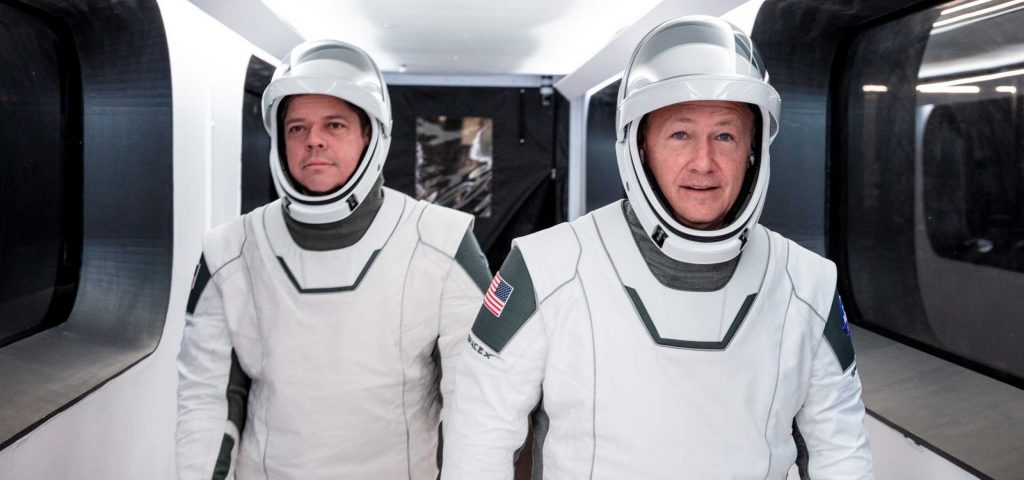
As a result, even though SpaceX’s Crew Dragon ‘Demo-2’ astronaut launch debut is likely more than two months away, even some part of NASA – famous for incredibly neutral and conservative public statements – appears to be all but certain that SpaceX will launch astronauts first. As of February 13th, 2020, all Demo-2 Falcon 9 and Dragon hardware is likely finished and awaiting integration in Florida. If things go as planned over the next several weeks, Falcon 9 and Crew Dragon could launch astronauts Bob Behnken and Doug Hurley as early as late-April or May 2020.
Check out Teslarati’s Marketplace! We offer Tesla accessories, including for the Tesla Cybertruck and Tesla Model 3.

Elon Musk
Elon Musk’s X will start using a Tesla-like software update strategy
The initiative seems designed to accelerate updates to the social media platform, while maintaining maximum transparency.

Elon Musk’s social media platform X will adopt a Tesla-esque approach to software updates for its algorithm.
The initiative seems designed to accelerate updates to the social media platform, while maintaining maximum transparency.
X’s updates to its updates
As per Musk in a post on X, the social media company will be making a new algorithm to determine what organic and advertising posts are recommended to users. These updates would then be repeated every four weeks.
“We will make the new 𝕏 algorithm, including all code used to determine what organic and advertising posts are recommended to users, open source in 7 days. This will be repeated every 4 weeks, with comprehensive developer notes, to help you understand what changed,” Musk wrote in his post.
The initiative somewhat mirrors Tesla’s over-the-air update model, where vehicle software is regularly refined and pushed to users with detailed release notes. This should allow users to better understand the details of X’s every update and foster a healthy feedback loop for the social media platform.
xAI and X
X, formerly Twitter, has been acquired by Elon Musk’s artificial intelligence startup, xAI last year. Since then, xAI has seen a rapid rise in valuation. Following the company’s the company’s upsized $20 billion Series E funding round, estimates now suggest that xAI is worth tens about $230 to $235 billion. That’s several times larger than Tesla when Elon Musk received his controversial 2018 CEO Performance Award.
As per xAI, the Series E funding round attracted a diverse group of investors, including Valor Equity Partners, Stepstone Group, Fidelity Management & Research Company, Qatar Investment Authority, MGX, and Baron Capital Group, among others. Strategic partners NVIDIA and Cisco Investments also continued support for building the world’s largest GPU clusters.
News
Tesla FSD Supervised wins MotorTrend’s Best Driver Assistance Award
The decision marks a notable reversal for the publication from prior years, with judges citing major real-world improvements that pushed Tesla’s latest FSD software ahead of every competing ADAS system.

Tesla’s Full Self-Driving (Supervised) system has been named the best driver-assistance technology on the market, earning top honors at the 2026 MotorTrend Best Tech Awards.
The decision marks a notable reversal for the publication from prior years, with judges citing major real-world improvements that pushed Tesla’s latest FSD software ahead of every competing ADAS system. And it wasn’t even close.
MotorTrend reverses course
MotorTrend awarded Tesla FSD (Supervised) its 2026 Best Tech Driver Assistance title after extensive testing of the latest v14 software. The publication acknowledged that it had previously criticized earlier versions of FSD for erratic behavior and near-miss incidents, ultimately favoring rivals such as GM’s Super Cruise in earlier evaluations.
According to MotorTrend, the newest iteration of FSD resolved many of those shortcomings. Testers said v14 showed far smoother behavior in complex urban scenarios, including unprotected left turns, traffic circles, emergency vehicles, and dense city streets. While the system still requires constant driver supervision, judges concluded that no other advanced driver-assistance system currently matches its breadth of capability.
Unlike rival systems that rely on combinations of cameras, radar, lidar, and mapped highways, Tesla’s FSD operates using a camera-only approach and is capable of driving on city streets, rural roads, and freeways. MotorTrend stated that pure utility, the ability to handle nearly all road types, ultimately separated FSD from competitors like Ford BlueCruise, GM Super Cruise, and BMW’s Highway Assistant.
High cost and high capability
MotorTrend also addressed FSD’s pricing, which remains significantly higher than rival systems. Tesla currently charges $8,000 for a one-time purchase or $99 per month for a subscription, compared with far lower upfront and subscription costs from other automakers. The publication noted that the premium is justified given FSD’s unmatched scope and continuous software evolution.
Safety remained a central focus of the evaluation. While testers reported collision-free operation over thousands of miles, they noted ongoing concerns around FSD’s configurable driving modes, including options that allow aggressive driving and speeds beyond posted limits. MotorTrend emphasized that, like all Level 2 systems, FSD still depends on a fully attentive human driver at all times.
Despite those caveats, the publication concluded that Tesla’s rapid software progress fundamentally reshaped the competitive landscape. For drivers seeking the most capable hands-on driver-assistance system available today, MotorTrend concluded Tesla FSD (Supervised) now stands alone at the top.
News
Elon Musk’s Grokipedia surges to 5.6M articles, almost 79% of English Wikipedia
The explosive growth marks a major milestone for the AI-powered online encyclopedia, which was launched by Elon Musk’s xAI just months ago.

Elon Musk’s Grokipedia has grown to an impressive 5,615,201 articles as of today, closing in on 79% of the English Wikipedia’s current total of 7,119,376 articles.
The explosive growth marks a major milestone for the AI-powered online encyclopedia, which was launched by Elon Musk’s xAI just months ago. Needless to say, it would only be a matter of time before Grokipedia exceeds English Wikipedia in sheer volume.
Grokipedia’s rapid growth
xAI’s vision for Grokipedia emphasizes neutrality, while Grok’s reasoning capabilities allow for fast drafting and fact-checking. When Elon Musk announced the initiative in late September 2025, he noted that Grokipedia would be an improvement to Wikipedia because it would be designed to avoid bias.
At the time, Musk noted that Grokipedia “is a necessary step towards the xAI goal of understanding the Universe.”
Grokipedia was launched in late October, and while xAI was careful to list it only as Version 0.1 at the time, the online encyclopedia immediately earned praise. Wikipedia co-founder Larry Sanger highlighted the project’s innovative approach, noting how it leverages AI to fill knowledge gaps and enable rapid updates. Netizens also observed how Grokipedia tends to present articles in a more objective manner compared to Wikipedia, which is edited by humans.
Elon Musk’s ambitious plans
With 5,615,201 total articles, Grokipedia has now grown to almost 79% of English Wikipedia’s article base. This is incredibly quick, though Grokipedia remains text-only for now. xAI, for its part, has now updated the online encyclopedia’s iteration to v0.2.
Elon Musk has shared bold ideas for Grokipedia, including sending a record of the entire knowledge base to space as part of xAI’s mission to preserve and expand human understanding. At some point, Musk stated that Grokipedia will be renamed to Encyclopedia Galactica, and it will be sent to the cosmos.
“When Grokipedia is good enough (long way to go), we will change the name to Encyclopedia Galactica. It will be an open source distillation of all knowledge, including audio, images and video. Join xAI to help build the sci-fi version of the Library of Alexandria!” Musk wrote, adding in a later post that “Copies will be etched in stone and sent to the Moon, Mars and beyond. This time, it will not be lost.”








